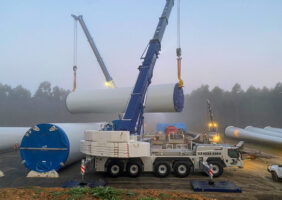Iron ore miners and steelmakers relying on carbon capture, utilisation and storage as a solution to decarbonise are risking lower sales and stranded assets as the technology continues to fail to impress, according to a new analysis by IEEFA.
IEEFA analysts Simon Nicholas and Soroush Basirat say they have reviewed six proposed steel projects that are said to rely on the carbon capture, utilisation and storage (CCUS) to clean up steel production.
The analysts found that CCUS has consistently underperformed where it has been deployed, running into engineering and technical programs, and only managing to capture a fraction of the CO2 emissions its proponents say it will.
In one example, a multi-billion dollar Genessee CCUS proposal for power generation near Edmonton, Canada was cancelled after it was found to be financially unviable.
Another flagship project, the Sleipner CCUS project that has long been held up by the industry as a pioneering CCUS project, was recently found to have over-reported the amount of CO2 it captured for years due to faulty monitoring equipment.
When it comes to iron and steelmaking, the prospects for CCUS are increasingly dim as there are multiple points within the iron and steelmaking processes which would require CCUS, and the cost of transporting CO2 between facilities, making the idea increasingly expensive over time.
Nicholas, the IEEFA lead analyst for the global steel sector, said that for all the promises by industry, these developments were not promising.
“I think it gives me the right to be dubious of these six projects either being completed at all, or capture any significant emissions if they do get up and running,” he said. “I just don’t think it’s a realistic prospect for a number of reasons.”
On the six proposed steelmaking projects that are seeking to rely on CCUS, the analysts found all lack transparency about key details on the projects including capture capacity and storage type. Two of three projects considered in “advanced development” do not have dates by which they expect to enter production.
The investor note also reports that there are still no commercial-scale CCUS plants for blast furnace-based steelmaking in operation anywhere in the world.
The world’s only operational commercial-scale CCUS project for steelmaking, the Al Reyadah project in the United Arab Emirates, only manages to capture a quarter of its emissions, the analysts found.
The plant only captures 26.6% of its emissions which are then used in Enhanced Oil Recovery. This is a process where CO2 is injected into a depleted oil or gas field to extract more fossil fuel.
“That only results in more emissions,” Nicholas said.
By contrast, the world’s first commercial-scale green steel plant, Stegra, is currently under construction in Sweden and is expected to enter operation in 2026 exclusively using green hydrogen.
Nicholas said it was clear “we’re not seeing any real progress” on CCUS, even as demand for green steel is beginning to grow and plans to build electric arc and Direct Reduced Iron (DRI) furnaces gather pace.
“Some steel makers are positioning themselves to supply that low carbon steel, Australia currently supplies 56% of the world’s iron ore but it is generally considered a low-grade supplier – which Nicholas says will become a problem as Direct Reduced Iron furnaces that rely on green hydrogen, require a higher grade of iron ore.
This raises the prospect that Australia’s iron miners will be outflanked by competitors in Brazil, Canada, South Africa and Guinea if they don’t adapt.
Of the Australian miners, companies are increasingly looking to technological solutions to allow lower grade ore to be used in green iron and steel production, but Nicholas says BHP – which announced a CCUS collaboration with India’s JSW Steel at its 2024 AGM – is an “outlier” for its promotion of CCUS in iron and steelmaking.
“It’s the Toyota of miners, insisting on sticking with hydrogen cars when the world is moving toward electric,” Nicholas says.
“It’s really becoming very clear they’re on a different path to everyone else.”
According to the International Energy Agency, the steel industry accounts for 2.8 gigatonnes of CO2 emissions each year, or 8 percent of total energy system emissions.








